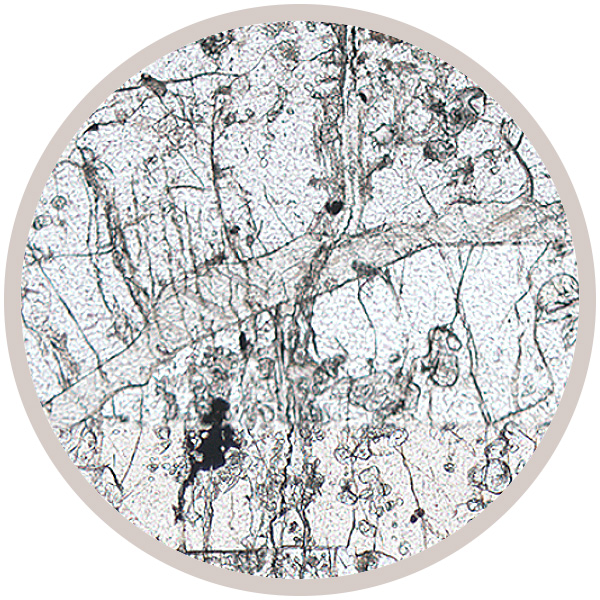
Fact sheet
The sample of rare minerals comes from the boundary between a pure Cretaceous limestone with flint nodules and a Paleocene dolerite plug rising above the Antrim plateau lavas. Metamorphic and metasomatic changes induced by the intrusion led to recrystallisation close to the margin. The rock contains several unusual and rare minerals including larnite a mineral named after the town of Larne where the calcium orthosilicate was first recorded, and spurrite a calcium silicate mineral found exclusively in contact metamorphic boundaries between carbonate and basic magmas.
The thin section is dominated by large grains of spurrite which are clear in plain polarised light but exhibits strong second order colour between crossed polars. The left hand side of the thin section contains large areas of fine grained larnite, a fine grained colourless mineral, generally less than 100 microns in size in this rock, but which also exhibits strong second order birefringence colours.
The United Kingdom Virtual Microscope (UKVM) collection consists of igneous, sedimentary and metamorphic rocks from around the UK.
It is intended as a teaching resource, helping to tell the story of the common rock types and how they form, and reflecting the history of the UK at the margins of the continent of Europe. The collection is a series of teaching sets, for example igneous rocks from the North Atlantic Igneous Province and SW England; high-temperature metamorphic rocks from Scotland and low-temperature metamorphic rocks from Wales; and sedimentary rocks, including English limestones and sandstones.






